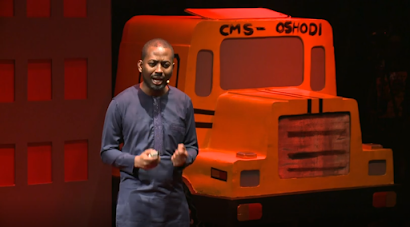A Comforting Nightmare
Since 1993, The Nightmare Before Christmas has become a standard. Not just for October's Halloween. This classic Disney movie last until December 25 -- Christmas. The last few months of every year in America are driven by capitalistic take on the holidays. With Halloween ruling all of October, Thanksgiving fighting it's way for November, and then Christmas engulfing the last six weeks of the year, it's hard to find just the right movie at just the right time. That's where The Nightmare Before Christmas takes the lead. Not only can you play this haunting and cheerful movie throughout the whole season, it's scary, yet welcoming with dark images and contrasting music, keeping it family friendly. If you grew up between the late 90s and early 2000s like myself, watching Nightmare became a tradition. The opening introduces all the towns people. They sing explaining how each year they get ready for Halloween. They say "we aren't mean" explaining scaring is just what they do. After this, the movie mainly follows very prominent town figure Jack Skellington. Audiences might know him more commonly as "The Pumpkin King." He laments how he's grown tired of the same thing over and over again -- who could blame him? While walking one long night, he stubbles upon Christmas town. Here he has a revelation. He takes this idea right back to Halloween town. The people, seeing Jack as their leader, agree. "This year, Christmas will be ours!" As Jack yells this, the whole town cheers, yet local out-cast Sally is concerned by this. As the town get ready, they steal Santa from Christmas town, make their own spooky toys, and Jack sets off to deliver the twisted gifts. Sally, trying to save Santa and Christmas, get caught by town villain, Oogie Boogie. Christmas Jack's way fails. Jack returns to the depressed town looking for Santa. There Jack defeats Oogie, Santa Saves Christmas, and all is well. The movie heavily relies on music throughout the film. The soundtrack, which can be seen on Spotify, is just about 94 minutes long, where as the film itself is actually only 76 minutes. The music is obviously a big part of the movie, especially to producer and composer Tim Burton.
After the "Overture" and "Opening", Nightmare starts with an orchestra playing out the main themes of Halloween town. A scarecrow with a pumpkin head blows with the wind, pointing the audience to a gave site. Shadows on grave stones singing "Boys and girls of every age, wouldn't you like to see something strange?" Being a stop motion picture film, with a halloween plot, it only makes perfect sense that the only thing we can see are these ghost-illuminated ghouls and a pitch black night sky. As ghost lead us into the town, the audience is introduced to a monster hiding under "your" bed with sharp teeth and right red eyes. The lyrics reflect the images we are given, moving very fast to the next Halloween-town resident. The second character is is a monster hiding under that stairs. The whole opening song cycles through the town. Interestingly enough from a music theory aspect, this one song changes keys just about every character as well. As each person sings their own theme, they have their own octaves, instruments that represent them, and keys they belong to. The major of halloween town sings in a different key and register as opposed to the children of the town. The fast moving music and changing from character to character makes it easier for the audience to move from horror to horror, not giving them the full time and availability for attention on the weird, disfigured monsters of the town. The music lightens the mood and keeps pushing the audience forward while explaining the basic story and setting for the plot to occur.
When Jack finds Halloween town, he has his own anthem to sing -- "What's this?" As Mr. Skellington admires the beauty of the new world around him, he is convinced this must be a dream. There are colored Christmas lights everywhere, people are singing songs, and there is a beautiful color, brightness, and wonder Christmas town offers. Once he realizes this world is absolutely real, he begins to compare it to his previous location. As the music follows him, he jumps from area to area giving us details about the town he is in vs Halloween town. The music is bright and whirly as Jack describes how children are "throwing snowballs instead of throwing heads, they're busy building toys and absolutely no one's dead." He goes on through the town and "can't believe (his) eyes." The smell of pies, children tucked away softly in their beds, the tinkering of toys, and decorating of trees and both seen and sing by Jack. This give the audience an entertaining show of Christmas town as opposed to a dead panning of town and a shot of Jack's wonder, making the moment even more magical. Both towns have their own song, one narrated by the characters of the town and the other by the protagonist. They are starkly different, and the combination of sight, in the colors and lighting, as well as the music, ever changing minor keys to simply major, give the audience more of a vibe for each town.
In conclusion, Tim Burton's The Nightmare Before Christmas does an excellent, classical combination of music in film. The story is told through the dialogue, music, lyrics, visuals, and everyone's common knowledge of Halloween and Christmas. Though it only pulls from an original score, it exploded in box offices and is still a popular, well-known movie and musical collection. It is personally my all time favorite holiday movie. Kick back and relax this season and watch your favorite holiday movie. Who know's what nuances will appear when you pay attention.





Comments
Post a Comment